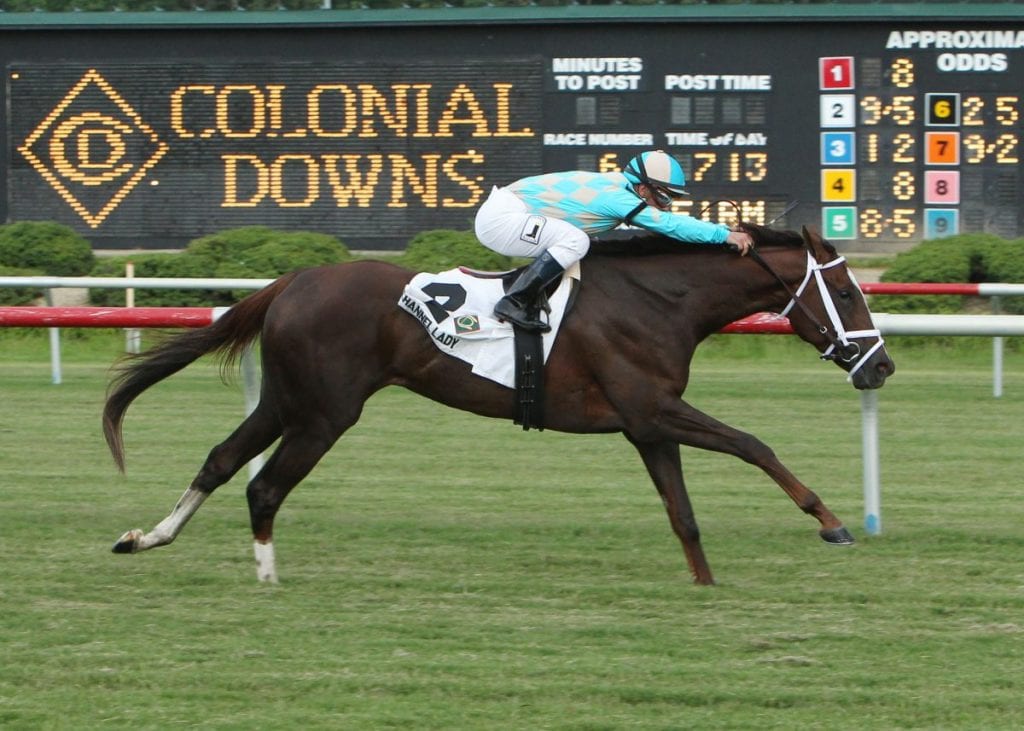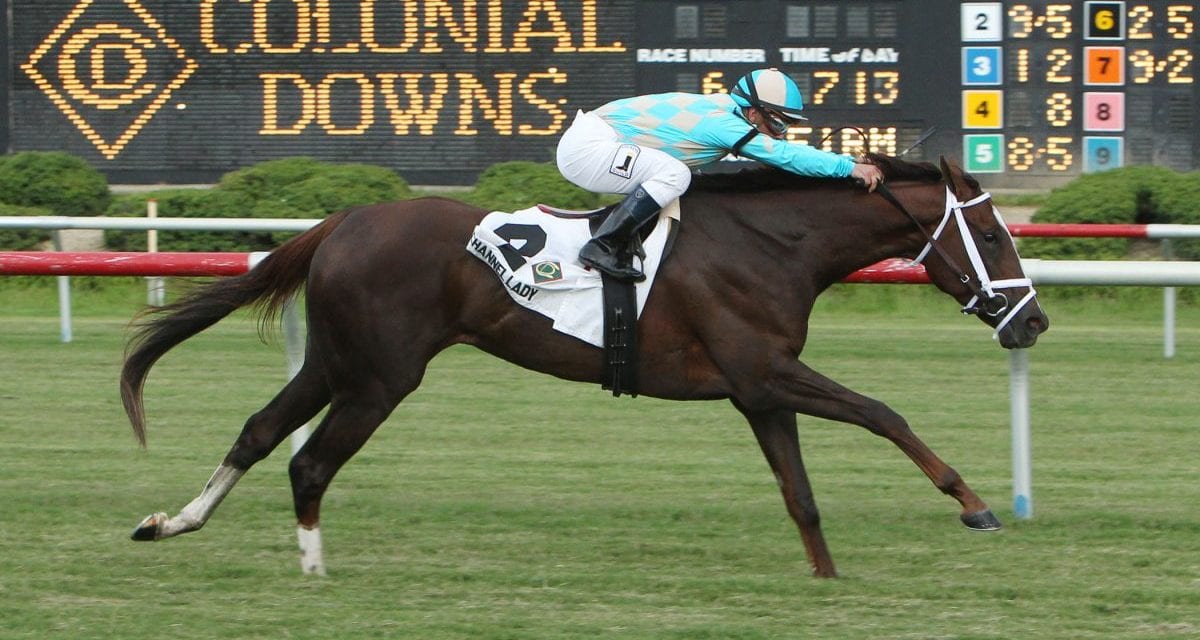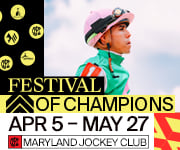
Channel Lady in the 2013 running of the Grade 3 Edward P. Evans All Along at Colonial Downs. Photo by Coady Photography.
by Frank Vespe
You couldn’t miss the contrast.
On the same weekend that Colonial Downs ran what may have been its last card of live racing, the International Gold Cup steeplechase (and flat) races took place at Great Meadow.
And while a crowd the Richmond Times-Dispatch called “thin but enthusiastic” traipsed out to New Kent to watch the standardbreds, an estimated 40,000 traveled to The Plains to tailgate, occasionally glimpse a race, and even bet from time to time.
Lest you think the difference has to do with Virginians’ lack of interest in standardbred racing, though, keep in mind that the track’s signature event, the Virginia Derby, only rarely drew as many as 10,000 fans.
It’s an odd juxtaposition.
On the one hand: flat and harness racing with (relatively) robust wagering handle but an aging and diminishing fan base often huddled in outmoded facilities lacking in basic comfort, let alone upscale amenities.On the other: giant crowds converging on steeplechase meetings to tailgate, party, and have a good time — with watching (and betting on) horse racing being only a secondary concern.
You could almost sense the flat and harness racing decision makers looking longingly at Great Meadow and wondering, plaintively, “How do they do it?” And, given the differences in handle, vice versa.
It’s a good question and one worth asking, because, even though the differences between “racetrack racing” on the one hand and steeplechase on the other are legion, the similarities are, too. And, while the challenges to growing fan interest in racing are real, and daunting, it’s also true that the stakes — as shown by the continuing decline of Thoroughbred wagering handle — are literally existential.
What’s more, while racing skeptics — something else which is legion — will rightly point out that the very large Gold Cup crowd produced what would by Thoroughbred standards be considered paltry wagering, that’s no reason not to court them. Indeed, new fans by definition will wager less than the existing, hard-core base; but give ’em time, give ’em time. Plus, the person who doesn’t wager much but attends the race still probably pays for admission, buys a program, eats a hot dog — puts money into the racing economy, in other words — and helps to create a “big game” atmosphere that attracts other people. Nothing, after all, succeeds like success.
And so, back to the original question, the one that Thoroughbred racing needs to ask itself: How do they do it?













Very, very good observation, Frank.
Marketing is the future.
What is thoroughbred horse racing doing to market itself to today’s consumers?
Thanks, Horseman – much appreciated.
You vhbpa supporters are a gift that keeps on giving. First you call forty some thousand dollars bet on five races run at Laurel a successful day. Really!! The last thoroughbred meet run at Colonial the exacta pool for almost every race was 18-25 thousand. Then you crow about 40 thousand people attending races and they don’t bet a dime. I would bet you that on any decent Saturday race day the OTB center in Martinsville/Henry Co. produced more handle than the forty thousand people at the Gold cup. I have talked to many college students and graduates who went to these races and they all said the same thing. ” I never saw a horse and didn’t care. You can make all the excuses and do all the marketing you want. You will never match the money the OTB’s put into your purse account. And how do you thank the people that were paying your bills? You shut down the OTB’S and thumb your noses at the people who were actually betting on your product. Horseracing in Virginia is dead. You VHBPA members have shot yourselves in the head, you’re just not smart enough to fall down!
Thanks for weighing in, HBC. I’m not sure who you’re yelling at here (if anyone on here), since no one associated with The Racing Biz is a VHBPA member… but I also think you may have missed the point we were trying to make in this piece. I was not “crowing” about 40,000 people at the Gold Cup — I was making a specific point that flat racing could use some help in figuring out how to get people to the races, something ‘chase racing has done well. Even for its biggest event, Colonial never got a crowd approaching the ones the Gold CUp gets, and while it’s true, as you say, that they don’t bet much, at the same time, 1) that’s not the worst sin in the world and 2) it’s hard to get new fans when no one comes to the track. And of course, every sport needs to generate new fans constantly. As for the OTBs — the truth is that OTBs are a drying-up market, and there’s a reason Colonial was willing to punt them while keeping its account wagering arm. Virtually all of the OTBs in Virginia are doing much worse handle-wise than they were a few years ago; most are off 50 percent or more from their high water mark. The Martinsville facility has gone from $12 million+ to $7 million last year — less than $30,000/day on average. Does that mean this standoff and shutting down the OTBs are good ideas? No, of course not, but the future always portended fewer (and perhaps ultimately no) stand-alone OTBs; it just appears to have arrived sooner than expected. Finally, speaking for The Racing Biz, we’re supporters of what makes Virginia racing stronger and better; maybe all of this will ultimately lead it there, but it’s pretty hard to see it from here.